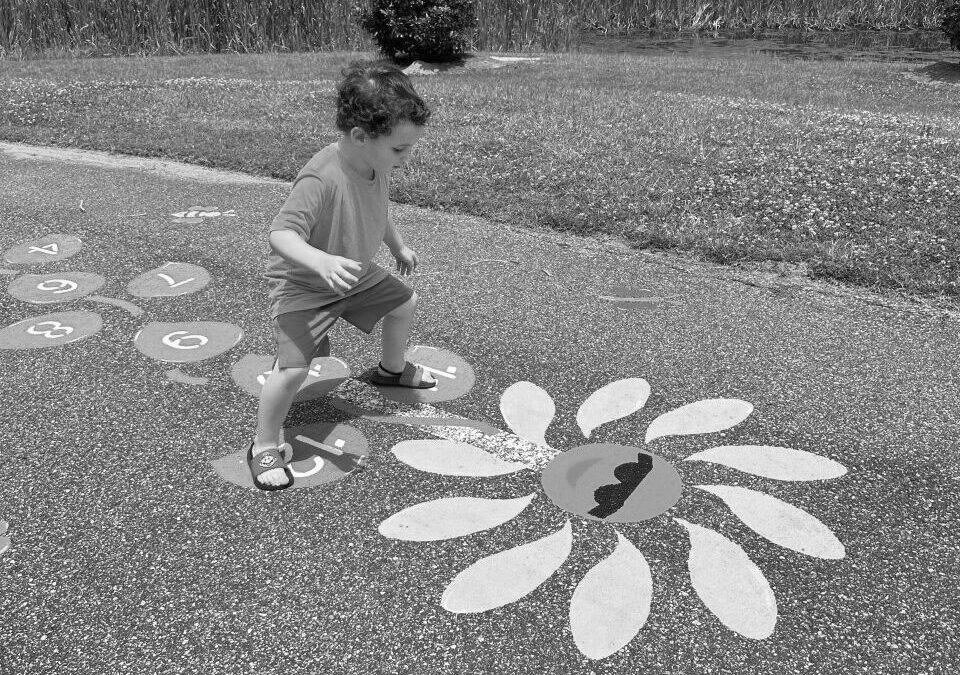BY BETH REEVES, ACES
AUBURN UNIVERSITY — Lee County is among 19 communities across Alabama receiving mini grants to install new areas to encourage children to engage in daily movement in a fun and engaging way.
In these areas, children use their entire bodies to walk a brightly painted sensory path. On this path, they can leap like a frog, walk a tightrope, crawl like a crab, march like ants or take a moment to relax like a tree.
Erin Reznicek, an Alabama Cooperative Extension System Supplemental Nutrition Assistance Program-Education (SNAP-Ed) specialist, said sensory paths add a vibrant and attractive touch to walking paths, school playgrounds and community spaces.
“Sensory path stencils are used to create playful markings on the ground, which guide interested parties through fun and challenging movements,” Reznicek said. “These markings encourage physical activity and guided play, helping participants improve their strength, endurance and balance.”
The sensory path stencils are the result of partnerships between Alabama Extension SNAP-Ed and local schools, recreation departments and community centers. SNAP-Ed community partners applied for a mini grant to receive sensory stencils and paint to create the paths. A committee then evaluated and awarded certain counties these stencils based on a few parameters. These included the county’s previous level of SNAP-Ed partnerships, quality of nutrition education and physical activity and commitment to maintaining the sensory paths and stencils.
SNAP-Ed staff and their partners received reusable stencils and high-quality paint to create the paths. The thick, commercial-grade plastic stencils can be used repeatedly for touch-ups. The paint, specially designed for pavement, includes an anti-skid agent to ensure safety.
Fit and Fun Playscape LLC (FFP) supplied the stencils with funds allocated through SNAP-Ed for initiatives that enhance nutrition and physical activity education in partnering locations. Pamela Gunter, founder of FFP, said she learned early about the important role physical activity plays in a child’s development as a mother.
“I volunteered to help paint outside recess games at my children’s school. The colorful drawings and the reaction of the kids as they interacted with the games were wonderful,” Gunter said. “This experience made me think about themed games that can be painted by anyone, anywhere, to help children improve physical health and overall well-being.”
Gunter then decided to launch a company that creates quality products that truly impacted the lives of children.
Timothy Davis, an associate professor in physical education at State University of New York at Cortland and a consultant for FFP, said sensory health is directly connected to physical literacy. Physical literacy involves developing fundamental movement skills such as running, jumping, skipping and hopping — which the sensory paths teach to children. It also includes understanding and appreciating physical activities and their benefits. A physically literate person is competent in various activities and understands the importance of an active lifestyle for overall health.
The sensory paths being built throughout the state will contribute to children’s motor skill development, healthy lifestyle adoption, cognitive development, social skills, emotional well-being and long-term health.

